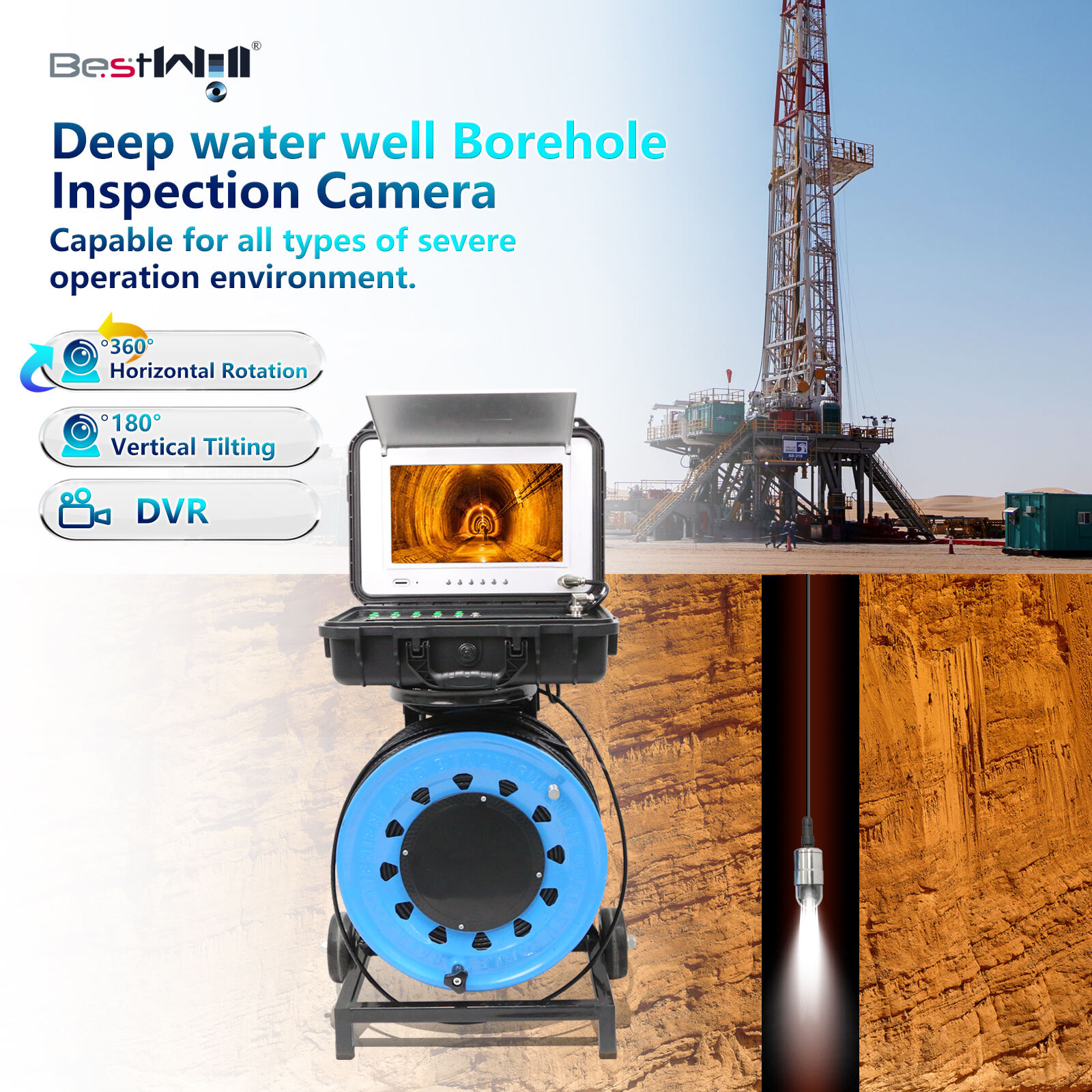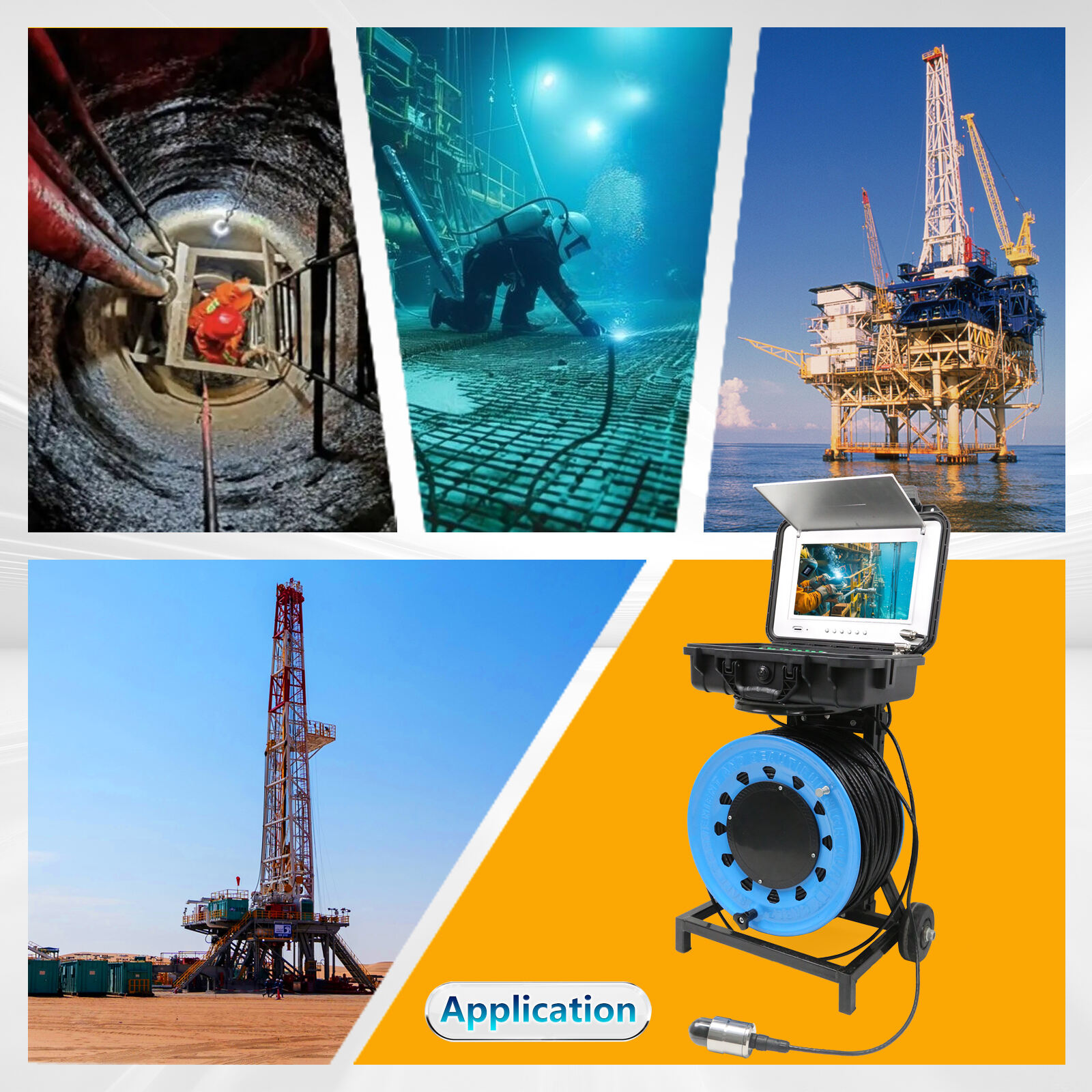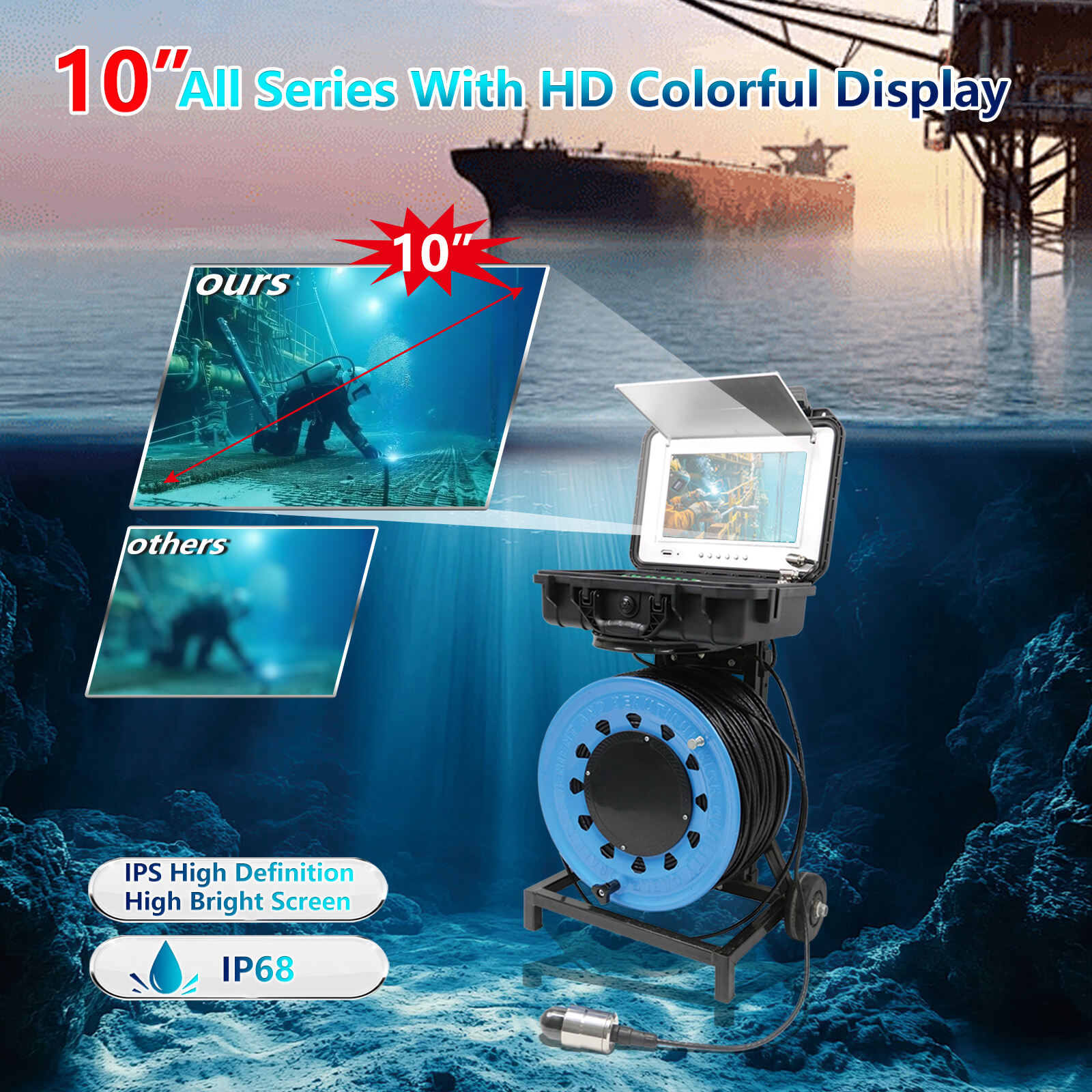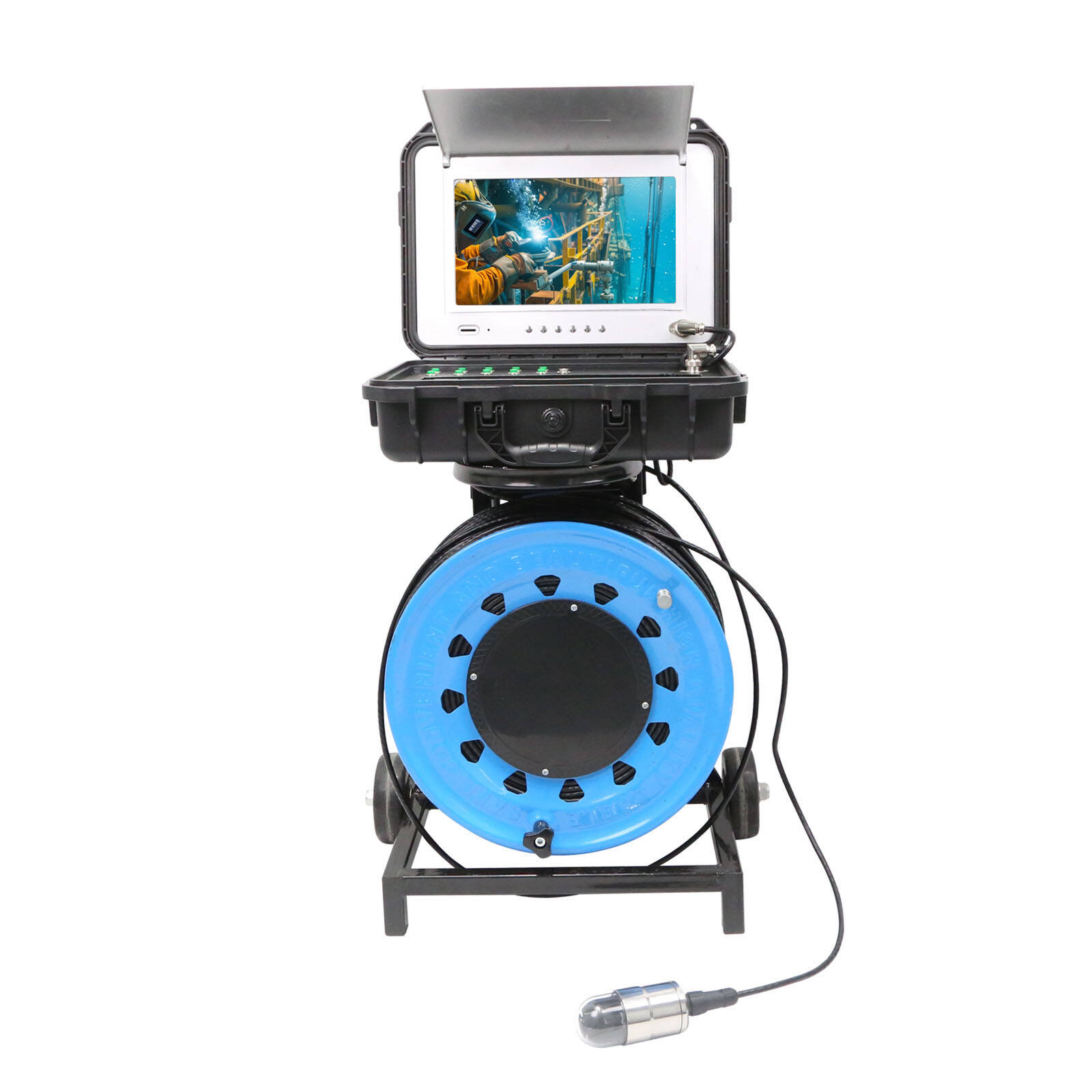Critical Role of Borehole Inspection Cameras in Marine Projects
For marine construction work, borehole inspection cameras have become essential equipment for spotting hidden structural problems beneath the surface that might cause major failures down the road. These devices allow engineers to check out underground geology without digging everything up, which keeps marine structures safe and stable over time. The cameras come with high definition imaging tech that captures really clear pictures, letting specialists spot things like hairline cracks, empty spaces, and other issues in areas where people normally can't get access. Industry reports suggest that catching these problems early during inspections can cut down on repair bills by around 30 percent, which explains why more companies are investing in this kind of technology as part of their regular maintenance plans. Beyond just saving money, this method helps prevent sudden breakdowns and actually makes those expensive underwater structures last much longer than they would otherwise.
Detecting Subsurface Structural Weaknesses
Borehole inspection cameras are really important for finding hidden structural problems below ground level, something that matters a lot for keeping marine projects safe and running smoothly. These camera systems give engineers a way to look at what's going on inside rock layers without digging everything up, letting them spot problems long before they become major headaches. With high definition imaging technology, operators can actually see cracks forming, detect empty spaces, and notice all sorts of irregularities in places where no one else could get close. Take marine foundation work for example, where clear pictures from downhole cameras make it possible to find those weak points that might eventually bring down entire structures. According to industry reports, catching these issues early through proper inspection cuts down on expensive repairs by around 30 percent. That makes sense when we think about how much money gets wasted fixing preventable damage later on.
SeaMax Borehole Video Camera

The SeaMax Borehole Video Camera offers high-definition imaging capabilities crucial for detecting structural weaknesses in marine environments. Its advanced lens captures detailed visuals to aid in early detection and maintenance of subsurface structures.
- [SeaMax Borehole Video Camera](https://example.com/seamax-borehole-camera)
Monitoring Sediment Accumulation in Offshore Drilling
Keeping track of sediment buildup matters a lot when it comes to running offshore drilling operations smoothly and avoiding dangerous situations down there. Borehole cameras let crews check on sediment levels regularly, something really important for spotting possible landslides or structural failures caused by shifting sediments beneath the seabed. With constant visual updates from these cameras, drillers can tweak their approach as needed, saving both time and money in the long run. According to reports from the Offshore Technology Conference, companies that use video tech for sediment monitoring tend to see around a 25% boost in how efficiently they operate. Beyond just numbers, this kind of system gives operators better information to work with, helping keep projects safe while still getting things done consistently out at sea where conditions are always changing.
OceanPro Sediment Monitoring Camera

The OceanPro Sediment Monitoring Camera offers real-time visual data for analyzing sediment accumulation critical for optimizing offshore drilling operations. Its video technology enhances efficiency by allowing immediate adjustments in drilling strategies based on sedimentary changes.
- [OceanPro Sediment Monitoring Camera](https://example.com/oceanpro-sediment-monitoring-camera)
Preventing Equipment Failure in Harsh Conditions
Borehole cameras play a key role in stopping equipment breakdowns, particularly when dealing with tough underwater conditions that plague many offshore operations. Old school inspection techniques just don't cut it down there - visibility is poor, pressure is intense, and divers can only stay so long. These specialized cameras spot early warning signs like rust spots or structural weaknesses long before they turn into major issues. Companies that schedule regular checks with borehole cameras typically see their repair bills drop and downtime shrink dramatically. Industry reports show failure rates fall around 40% for facilities that implement routine camera inspections, which makes a huge difference in day-to-day operations. For oil platforms, underwater construction sites, and other marine infrastructure projects, keeping equipment running smoothly means avoiding expensive delays and maintaining steady progress on multi-million dollar ventures.
DurableWave Equipment Surveillance Camera

DurableWave Equipment Surveillance Camera enables early detection of equipment wear and corrosion in severe underwater conditions, crucial for reducing downtime and maintenance costs significantly in marine projects.
- [DurableWave Equipment Surveillance Camera](https://example.com/durablewave-equipment-surveillance-camera)
Borehole Camera Technology Advancements for Marine Use
High-Definition Imaging for Precision Analysis
The latest improvements to borehole cameras now come with HD imaging capabilities that really step up the game for underwater inspections. These high definition cameras give much better visuals so geologists can do their analysis work properly, making all those important decisions when working on marine projects. When engineers get to see clearer pictures of what's going on below the surface, they're able to judge underwater conditions far more accurately, cutting down on mistakes. According to some recent market studies, demand for these HD imaging systems has jumped by around 60% in just a few years. The whole industry seems to be moving towards more precise analysis methods in engineering work, and this makes sense given how expensive errors can be in marine operations where things are already complicated enough.
Portable Borehole Camera Systems for Remote Locations
Portable borehole camera systems have come a long way, making it much easier to inspect hard-to-reach spots like underwater pipelines or deep well structures. The latest models focus on being easy to carry around without sacrificing important features, so inspectors can actually get their work done where it matters most. We're talking about equipment that weighs under 20 pounds but still holds up against tough conditions. Field crews no longer struggle with bulky gear when they need to check out problems in remote areas. Industry professionals report that these new systems cut down inspection time by about half compared to older methods. This speed boost means projects finish faster and repairs happen sooner rather than later something that makes all the difference in the fast-paced world of marine operations where downtime costs money.
Corrosion-Resistant Materials for Saltwater Environments
Modern borehole cameras deployed in underwater settings have started using materials that stand up better against saltwater damage. These changes mean the inspection gear lasts longer and keeps working properly even when faced with tough ocean conditions. Marine engineers have been putting special coatings and alloys into camera construction lately, which helps them survive longer in their salty environment. Some field reports indicate that switching to these resistant materials cuts down on repair costs somewhere around 30 percent after a few years, making quite a difference in budget planning for offshore construction work. Contractors who make this switch often find themselves spending less money on replacements during routine inspections.
Enhancing Safety and Regulatory Compliance
Reducing Human Entry into Hazardous Zones
Borehole inspection cameras offer a major advantage by cutting down on the need for people to go into dangerous areas underwater, which makes the whole operation much safer. Instead of sending workers into risky situations, these devices let operators check conditions through remote video feeds. This means fewer personnel actually entering potentially deadly environments. Safety improvements are obvious here, and this practice fits right in with what most industries are doing to protect their workers. Looking at numbers from the maritime sector shows something pretty impressive too. When companies started using these kinds of remote inspection methods, including borehole cameras specifically, accident rates dropped by more than half in many cases. For anyone involved in underwater work, it's clear why these cameras have become so essential to keeping everyone safe while getting the job done properly.
Meeting International Maritime Inspection Standards
Borehole inspection cameras help companies stay in line with international maritime inspection standards something they need to do if they want to keep their operational licenses and safety certifications intact. The cameras capture live video footage that serves as solid proof when regulators come knocking, making what is otherwise a complicated compliance process much smoother. Maritime businesses are getting serious about being accountable and transparent these days, so adopting tech like borehole cameras isn't just nice it's becoming necessary for many ship operators. Recent market analysis shows this trend continuing as more shipping firms realize how important these standards have become. Borehole inspection tech does more than cut down on paperwork though it actually improves day-to-day operations while showing genuine dedication to following both safety protocols and environmental protection rules across the board.
Case Studies: Borehole Cameras in Action
Deep-Sea Pipeline Integrity Assessments
Deep sea pipeline operators have seen real benefits from using borehole cameras during integrity checks, according to multiple field reports. The cameras spot weaknesses in pipe walls and corrosion spots that might otherwise go unnoticed until it's too late. What makes them so useful is their ability to inspect pipelines thoroughly without needing to shut down operations or dig up sections of seabed. For offshore platforms where downtime costs millions, this means engineers can check for problems while keeping everything running smoothly. Companies report cutting unexpected repair work by around 35% after implementing regular camera inspections. That kind of savings isn't just good for budgets but also prevents dangerous leaks before they happen, making these cameras an indispensable tool for anyone serious about pipeline safety.
Salvage Operations Using Real-Time Video Feedback
Borehole cameras have become indispensable during salvage work because they give crews live video right when they need it most, especially down there in tricky underwater settings. With these cameras, divers can actually see what's going on below the surface, spot things blocking their path, and figure out how best to go about retrieving whatever needs getting back up. Experience shows that having this visual information makes a big difference - some studies suggest success rates jump around 20% or so when teams use them regularly. Salvage companies tell stories about how these cameras saved entire operations during emergencies, where knowing exactly what was happening underwater meant the difference between failure and pulling off a rescue. The ability to see clearly beneath the waves just keeps making these cameras a must-have tool for anyone serious about doing salvage work effectively.
Table of Contents
- Critical Role of Borehole Inspection Cameras in Marine Projects
- Detecting Subsurface Structural Weaknesses
- Monitoring Sediment Accumulation in Offshore Drilling
- Preventing Equipment Failure in Harsh Conditions
- Borehole Camera Technology Advancements for Marine Use
- Enhancing Safety and Regulatory Compliance
- Case Studies: Borehole Cameras in Action


